pahu heiau or patu hula Wood, skin, fiber height 30 1/4in (77cm) PROVENANCE James Drummond Dole, Honolulu, Hawaii Thence by descent James Drummond Dole (1877–1958), also known as the "Pineapple King'", was an American industrialist who developed the pineapple industry in Hawaii and established the Hawaiian Pineapple Company. Hawaiian Pineapple Company, or HAPCO, was later reorganized to become the Dole Food Company, which now does business in over 90 countries. Dole was a cousin (once removed) of Sanford B. Dole, President of the Republic of Hawaii. For a discussion of Hawaiian drums, see Buck (1957: pp. 396-401): "Wooden drums with a shark-skin head were termed pahu. They were made in two classes: the short pahu hula for beating time to hula dances and the tall pahu heiau, or temple drum, used in religious ceremonies. The Bishop Museum collection contains 20 hula drums and one temple drum... ...Most drums were made of cylindrical sections of the trunks of coconut trees, but other woods, such as breadfruit, were used. The sections were hollowed out from the top end to about two-thirds their length to form the resonance chamber. The section was then reversed and hollowed out from the lower end so as to have a thick septum between the two hollow, the septum being convex on it lower surface...The large temple drum is 46 inches high." (Buck, 1957: p.396-7) Cf. Wardwell (1994: fig. 97) for a similar, but smaller pahu hula type in the collection of the Los Angeles County Museum of Art (M2008.66.11), formerly in the Masco Collection. According to Kaeppler, "the pahu form is said to have originated in eastern Polynesia, perhaps on the Society Islands, and it is also found in the Australs and the Marquesas. It was not used in western Polynesia or Melanesia. On Hawaii in early times, such drums were used both for the ceremonies performed at ritual temple platforms and at the somewhat more secular hula dances. In the latter context, as still performed today, the sound of the drum was only one part of the event, which combined music, poetry, and the movements of the dance into one exalted expression. At its highest level, the dance was called the hula pahu, and honored the great chiefs and gods. Pahu were associated with Lono, the god of peace and agriculture. Each one had a personal name, and its ownership signified social status. The size of the drum itself suggested the level that had been attained by the player, and only chiefs could use the largest ones." (Wardwell, 1994: p. 238) This exceptional, stone-carved drum, most likely a temple drum (pahu heiau) due to the size, is hollowed with three rows of openwork crescents joined to one another at the base, a skin of later date (probably cow or goat) stretched over the top lashed on with intricately woven fiber cord of later date.
pahu heiau or patu hula Wood, skin, fiber height 30 1/4in (77cm) PROVENANCE James Drummond Dole, Honolulu, Hawaii Thence by descent James Drummond Dole (1877–1958), also known as the "Pineapple King'", was an American industrialist who developed the pineapple industry in Hawaii and established the Hawaiian Pineapple Company. Hawaiian Pineapple Company, or HAPCO, was later reorganized to become the Dole Food Company, which now does business in over 90 countries. Dole was a cousin (once removed) of Sanford B. Dole, President of the Republic of Hawaii. For a discussion of Hawaiian drums, see Buck (1957: pp. 396-401): "Wooden drums with a shark-skin head were termed pahu. They were made in two classes: the short pahu hula for beating time to hula dances and the tall pahu heiau, or temple drum, used in religious ceremonies. The Bishop Museum collection contains 20 hula drums and one temple drum... ...Most drums were made of cylindrical sections of the trunks of coconut trees, but other woods, such as breadfruit, were used. The sections were hollowed out from the top end to about two-thirds their length to form the resonance chamber. The section was then reversed and hollowed out from the lower end so as to have a thick septum between the two hollow, the septum being convex on it lower surface...The large temple drum is 46 inches high." (Buck, 1957: p.396-7) Cf. Wardwell (1994: fig. 97) for a similar, but smaller pahu hula type in the collection of the Los Angeles County Museum of Art (M2008.66.11), formerly in the Masco Collection. According to Kaeppler, "the pahu form is said to have originated in eastern Polynesia, perhaps on the Society Islands, and it is also found in the Australs and the Marquesas. It was not used in western Polynesia or Melanesia. On Hawaii in early times, such drums were used both for the ceremonies performed at ritual temple platforms and at the somewhat more secular hula dances. In the latter context, as still performed today, the sound of the drum was only one part of the event, which combined music, poetry, and the movements of the dance into one exalted expression. At its highest level, the dance was called the hula pahu, and honored the great chiefs and gods. Pahu were associated with Lono, the god of peace and agriculture. Each one had a personal name, and its ownership signified social status. The size of the drum itself suggested the level that had been attained by the player, and only chiefs could use the largest ones." (Wardwell, 1994: p. 238) This exceptional, stone-carved drum, most likely a temple drum (pahu heiau) due to the size, is hollowed with three rows of openwork crescents joined to one another at the base, a skin of later date (probably cow or goat) stretched over the top lashed on with intricately woven fiber cord of later date.
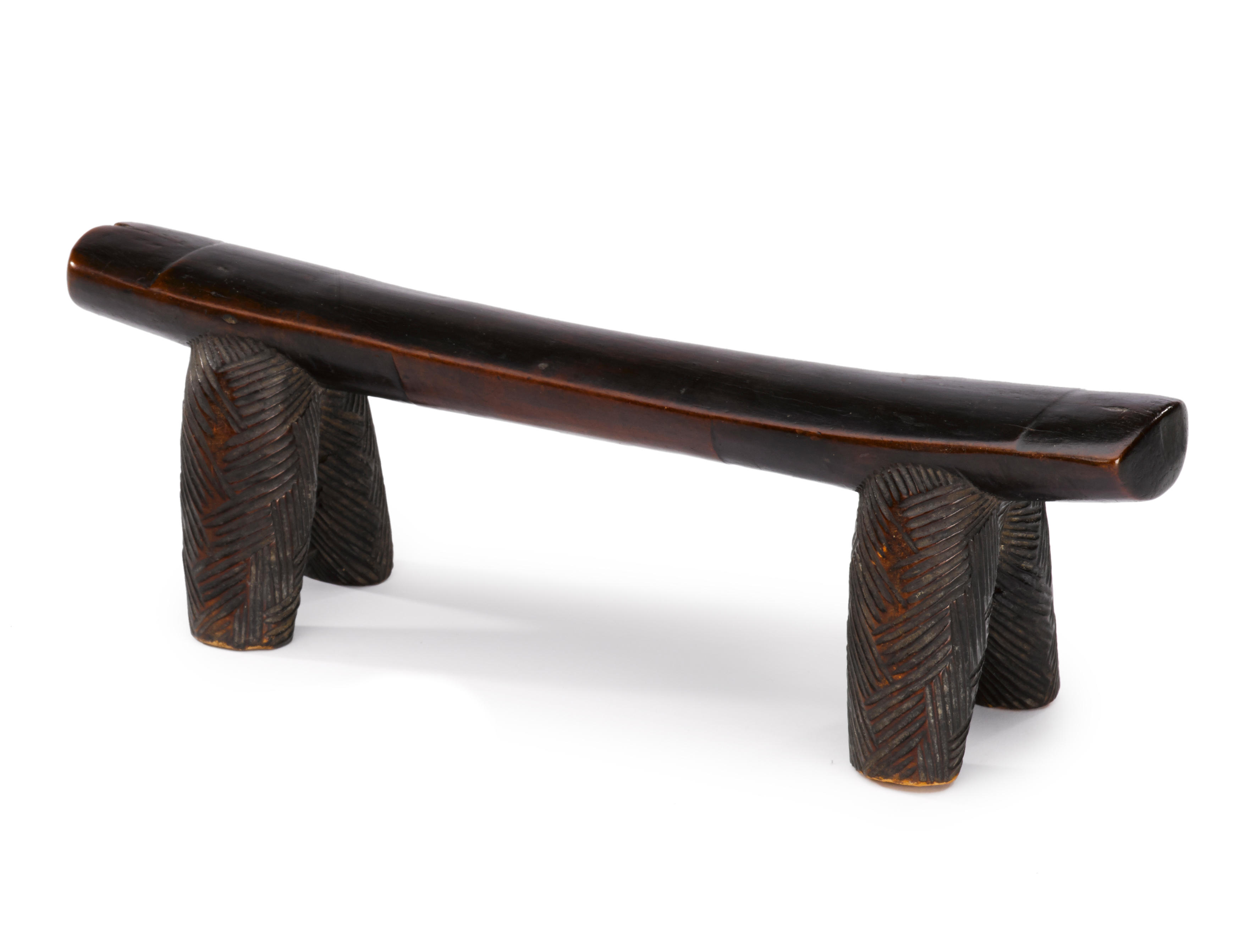
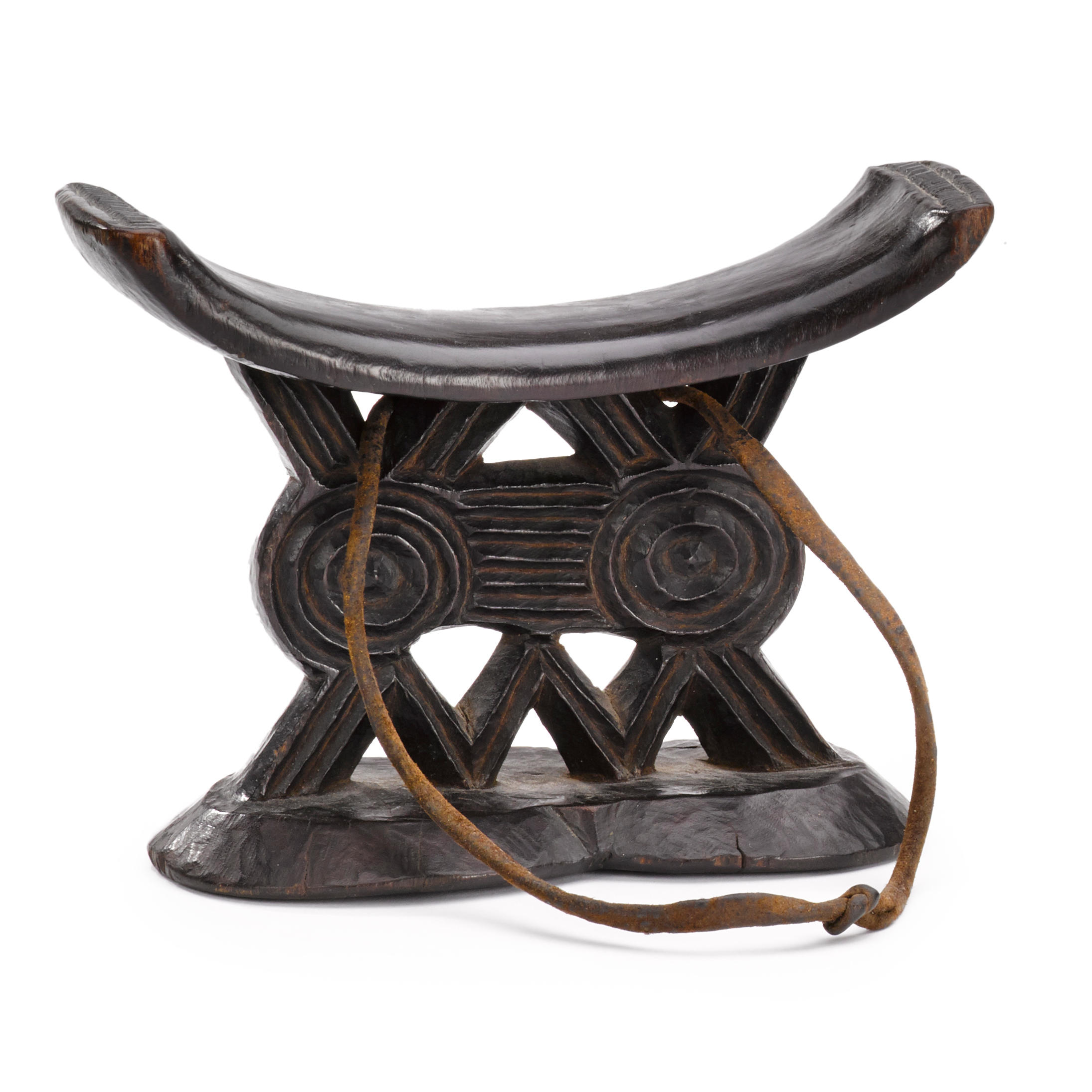
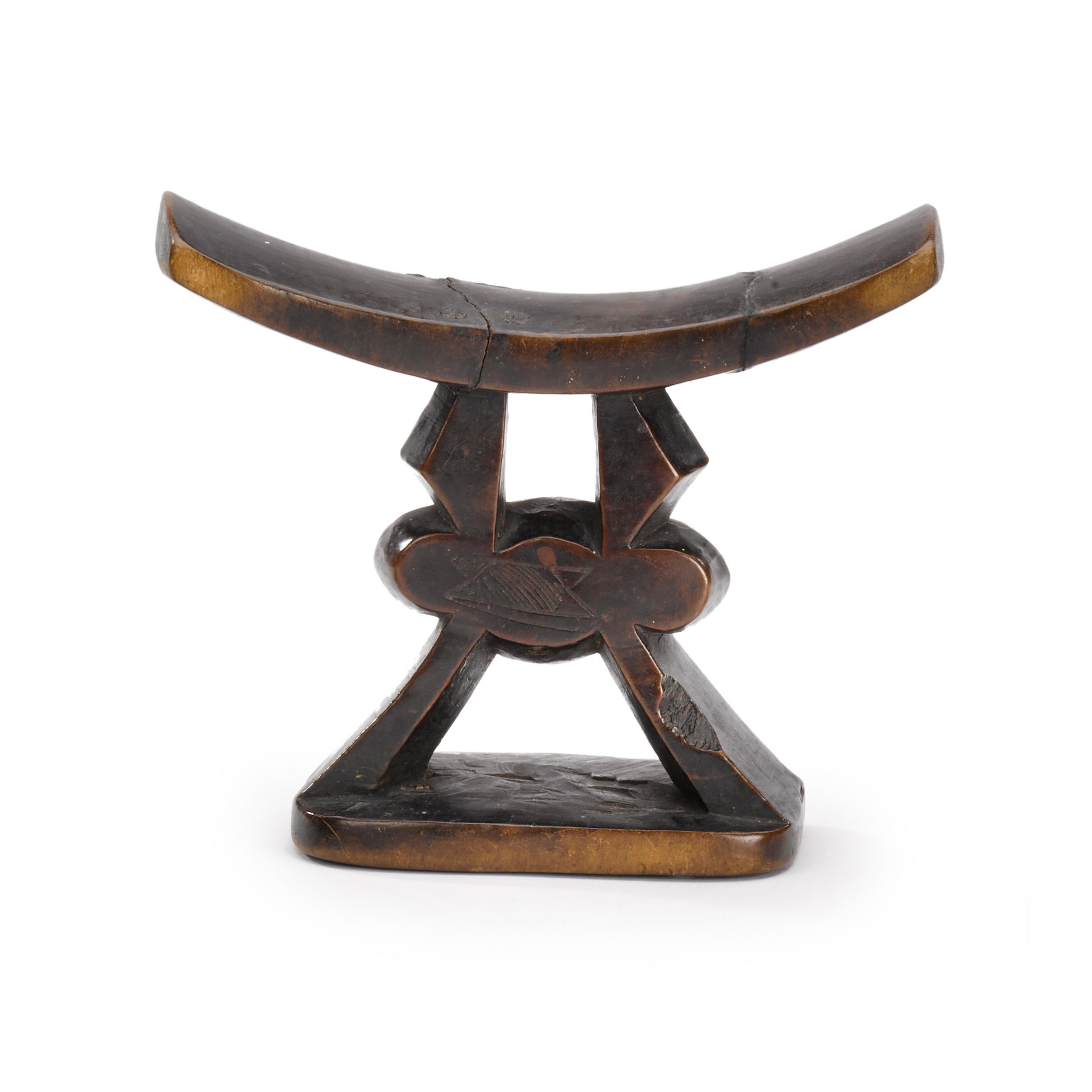
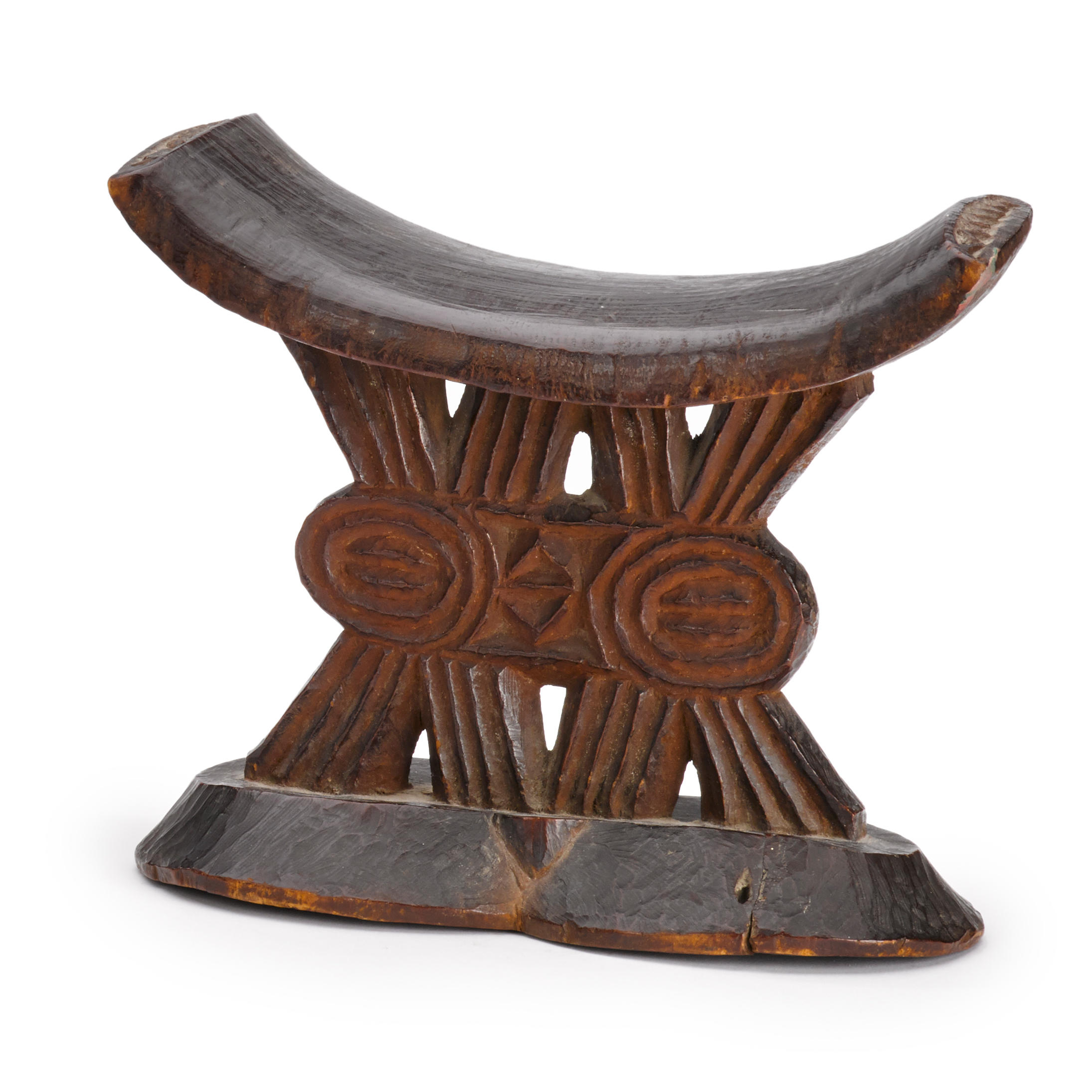
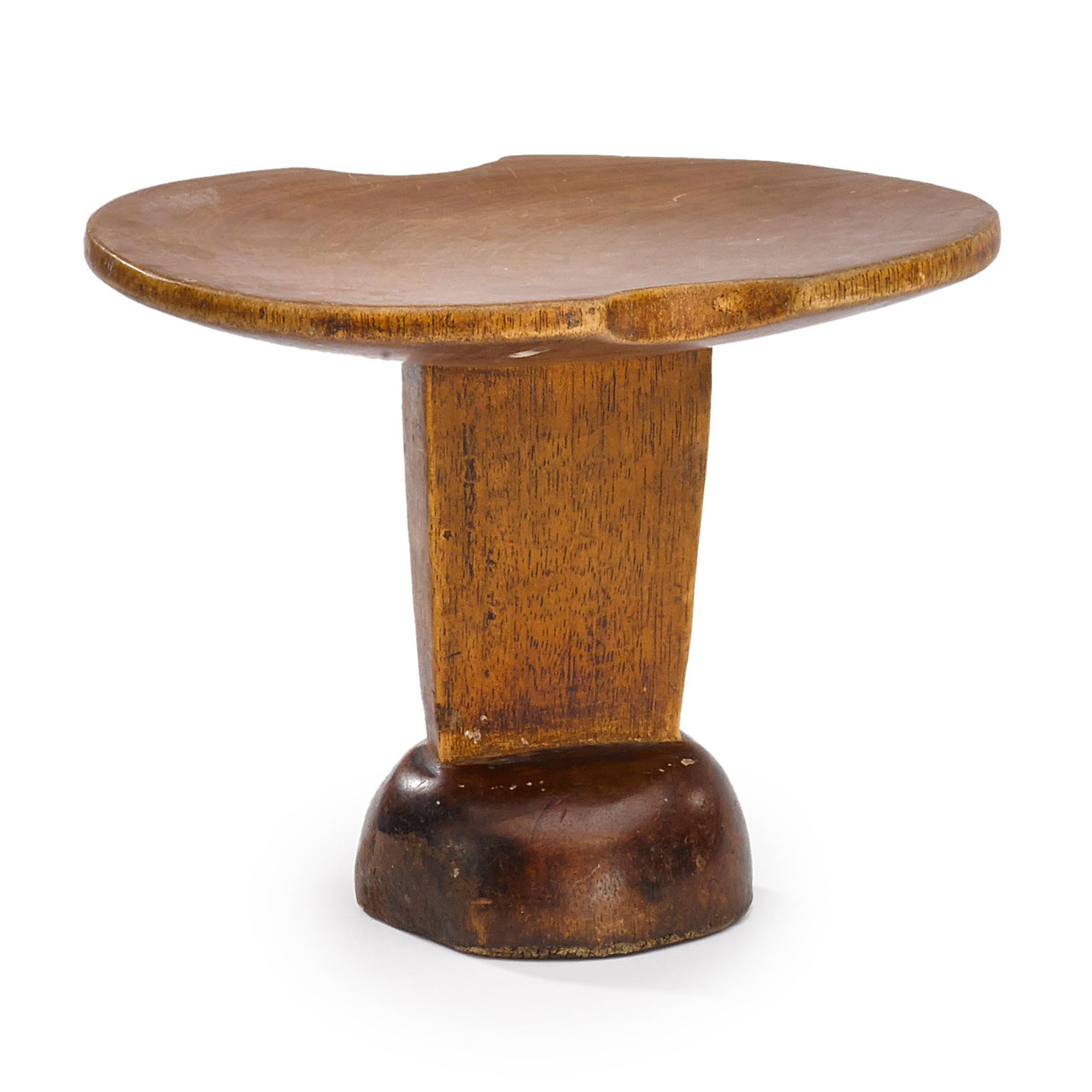
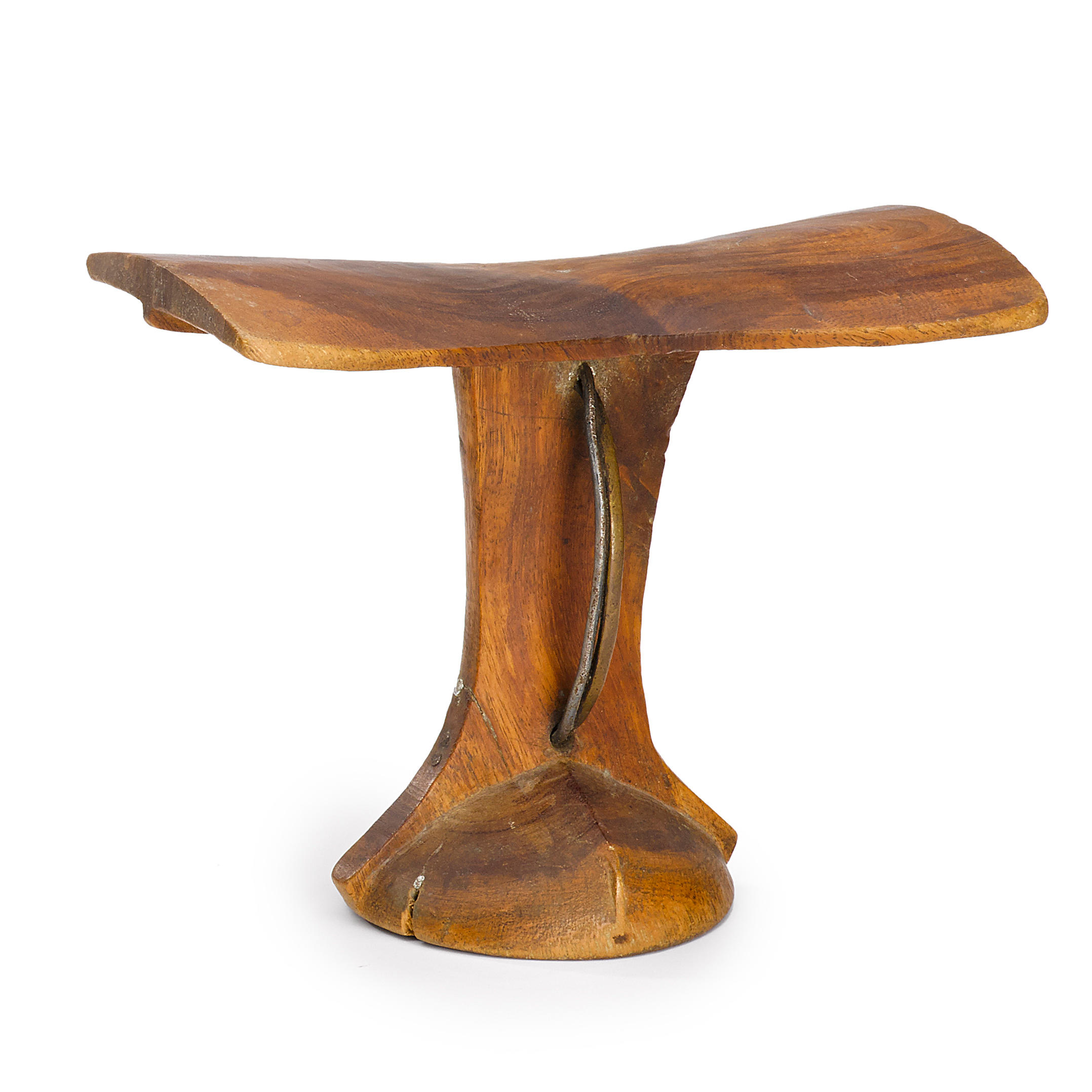
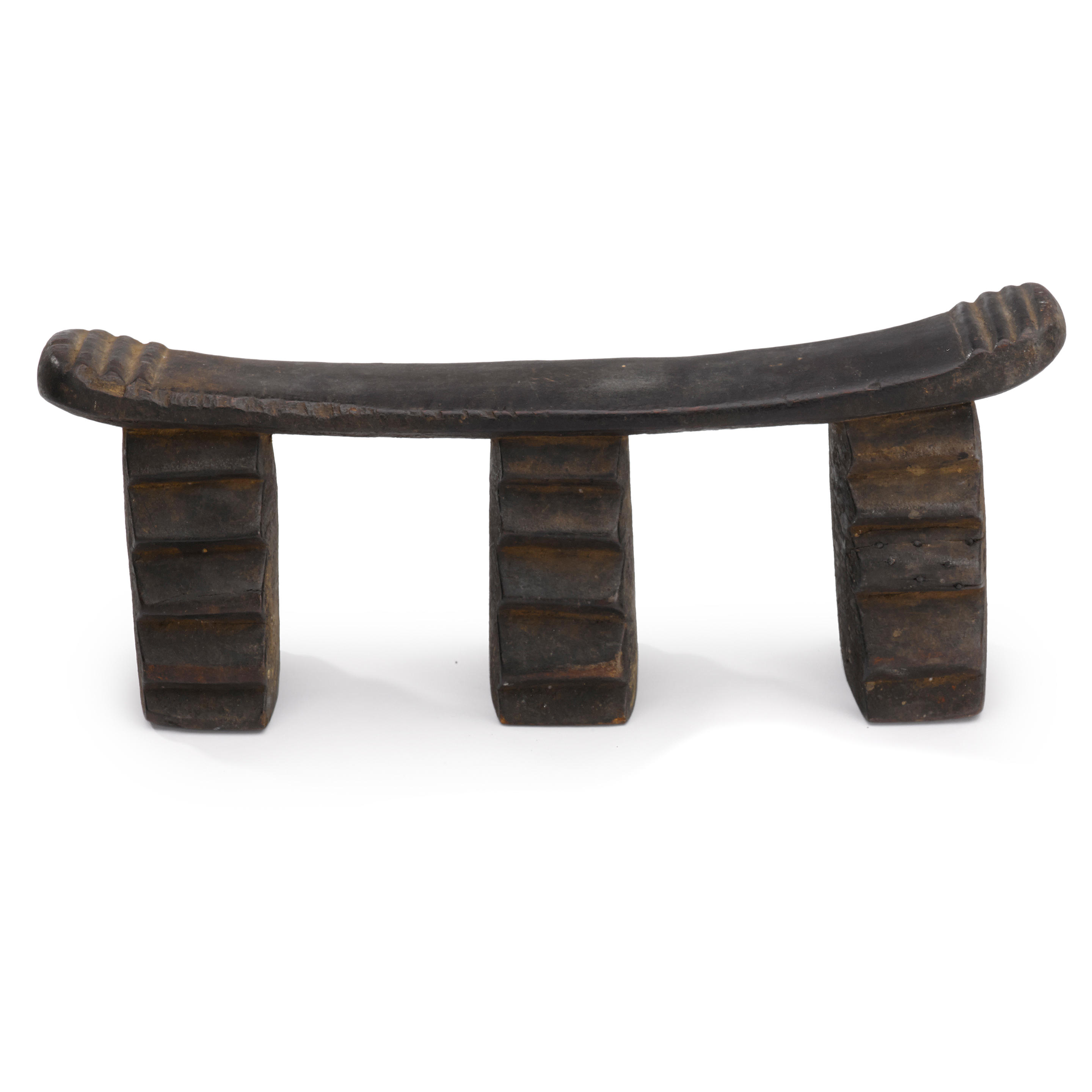
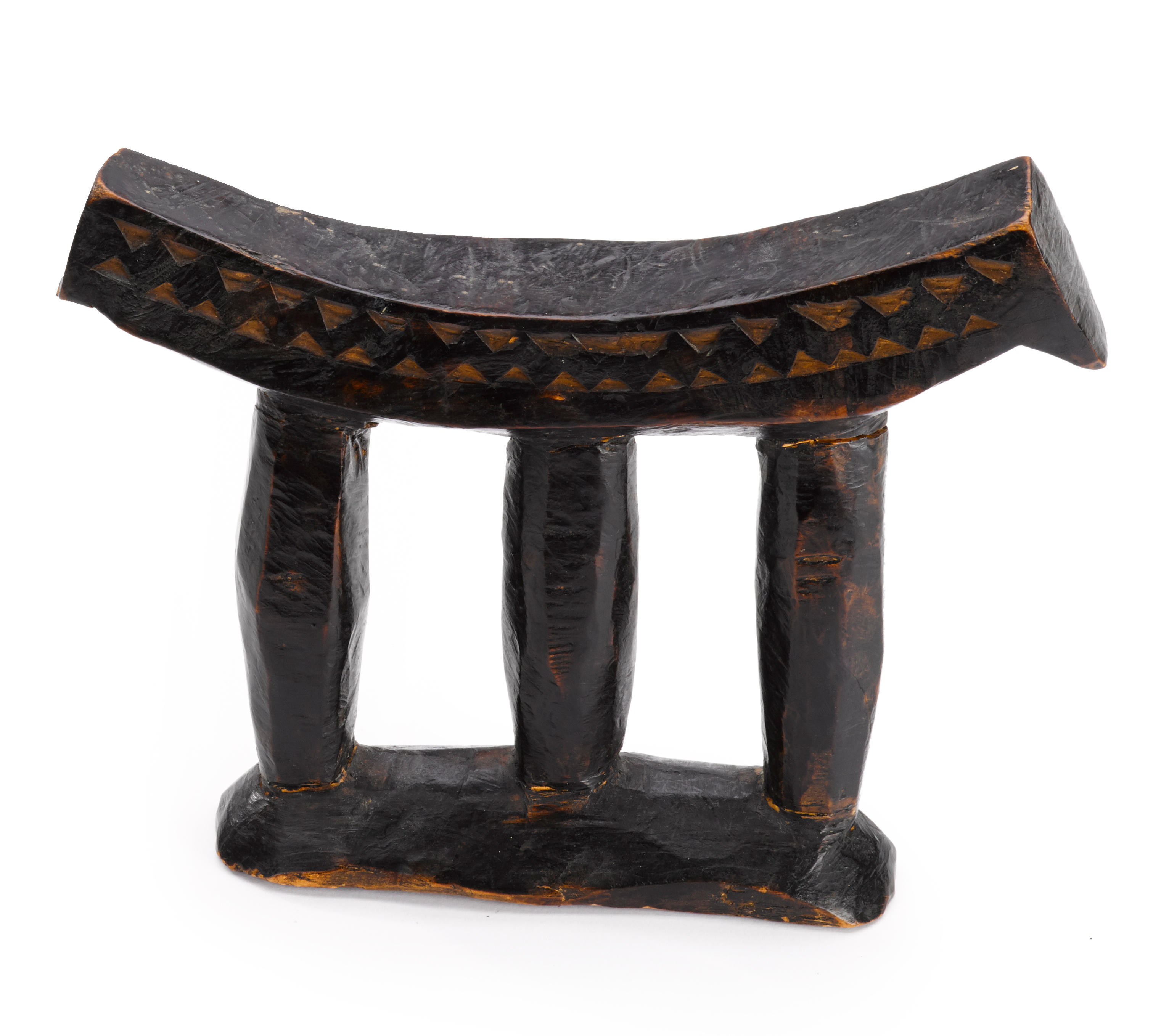
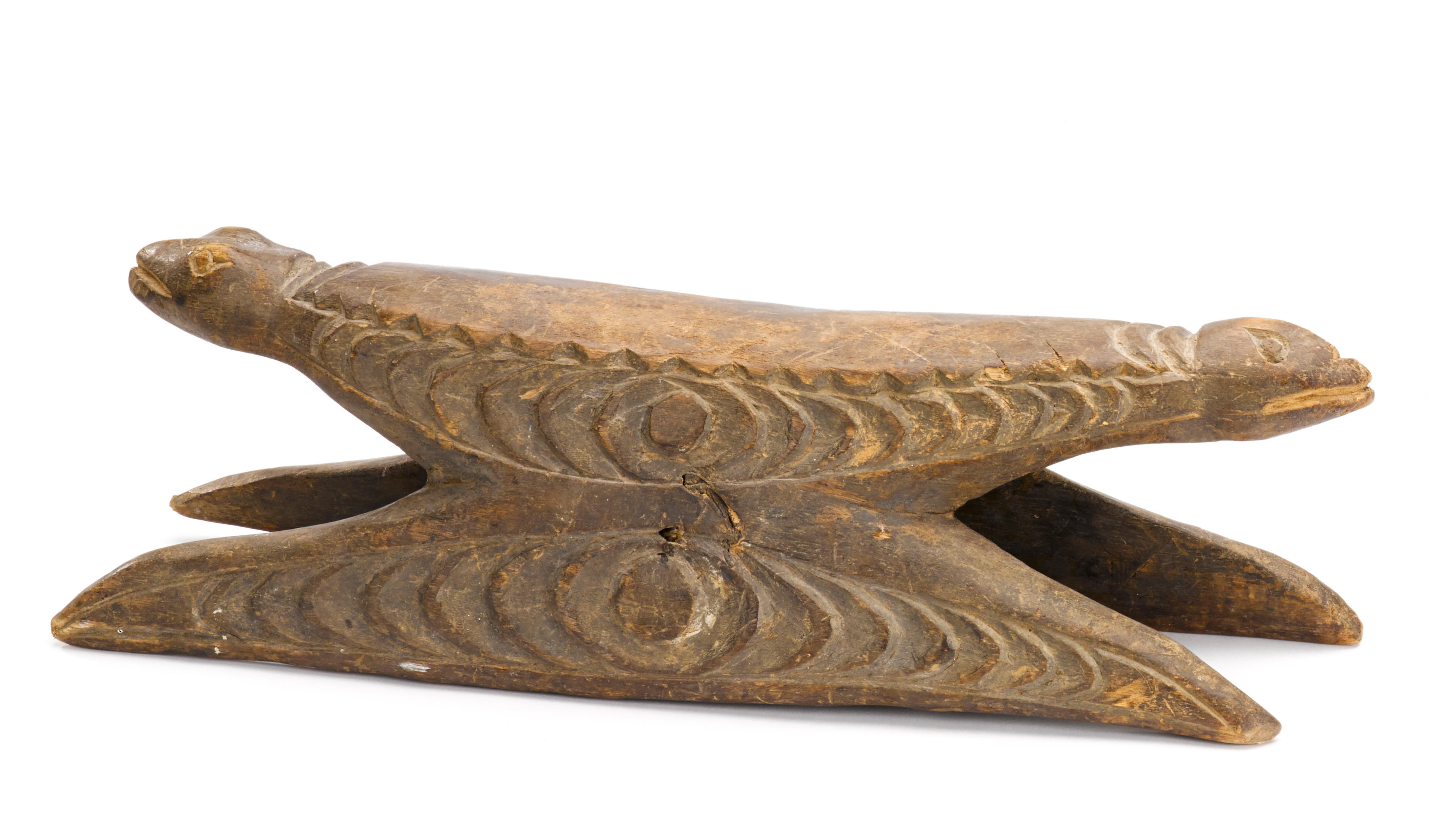

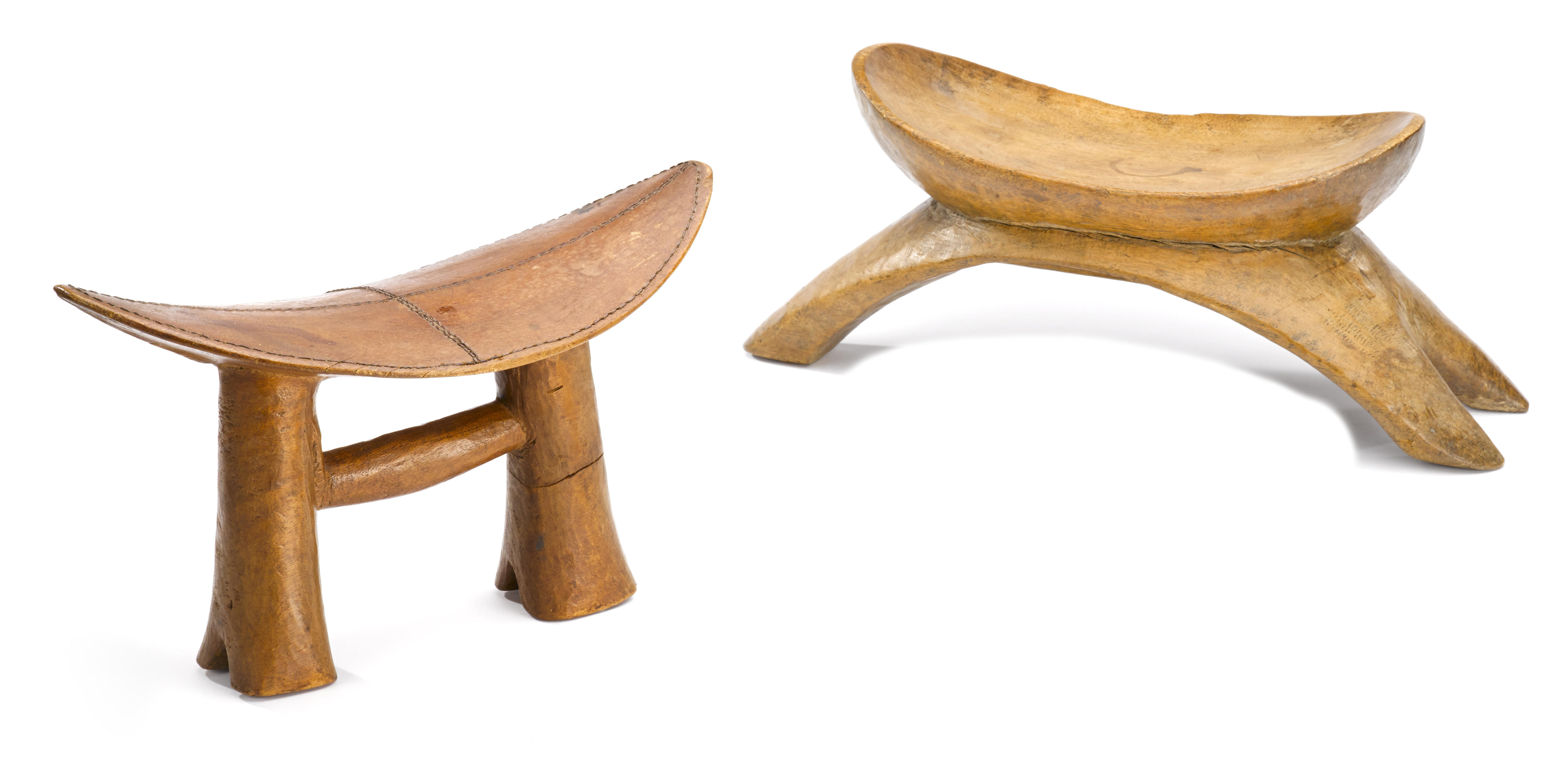
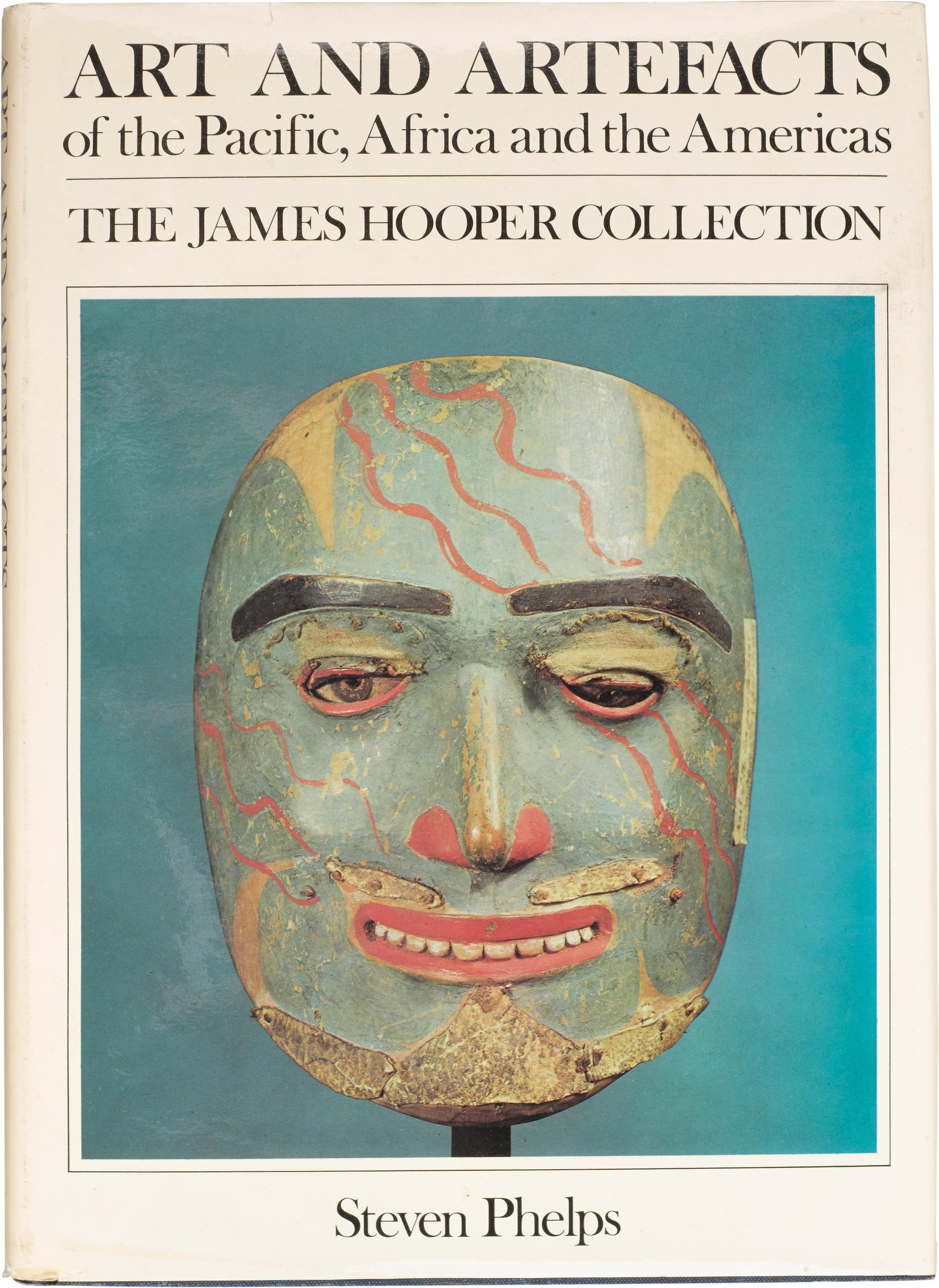
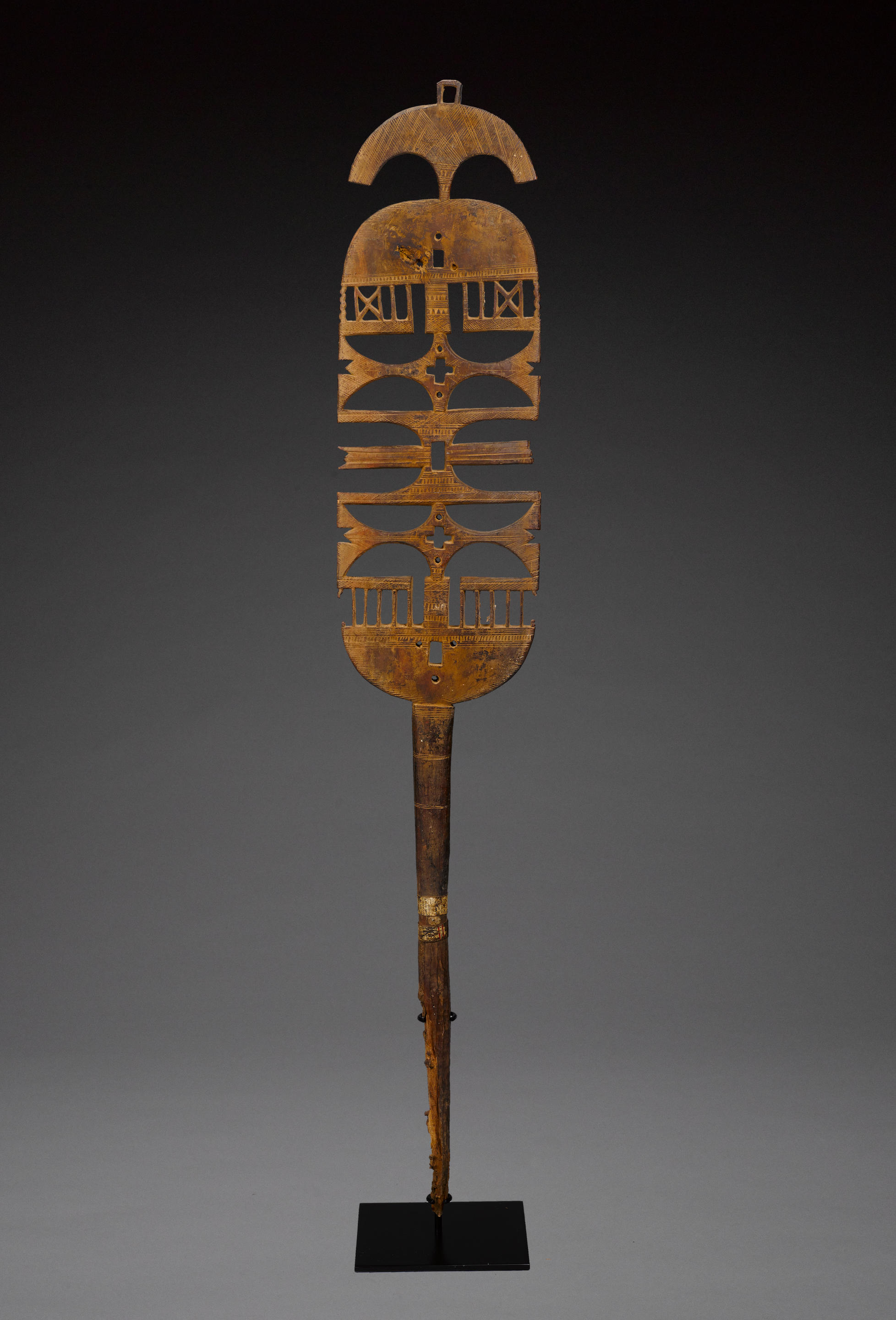
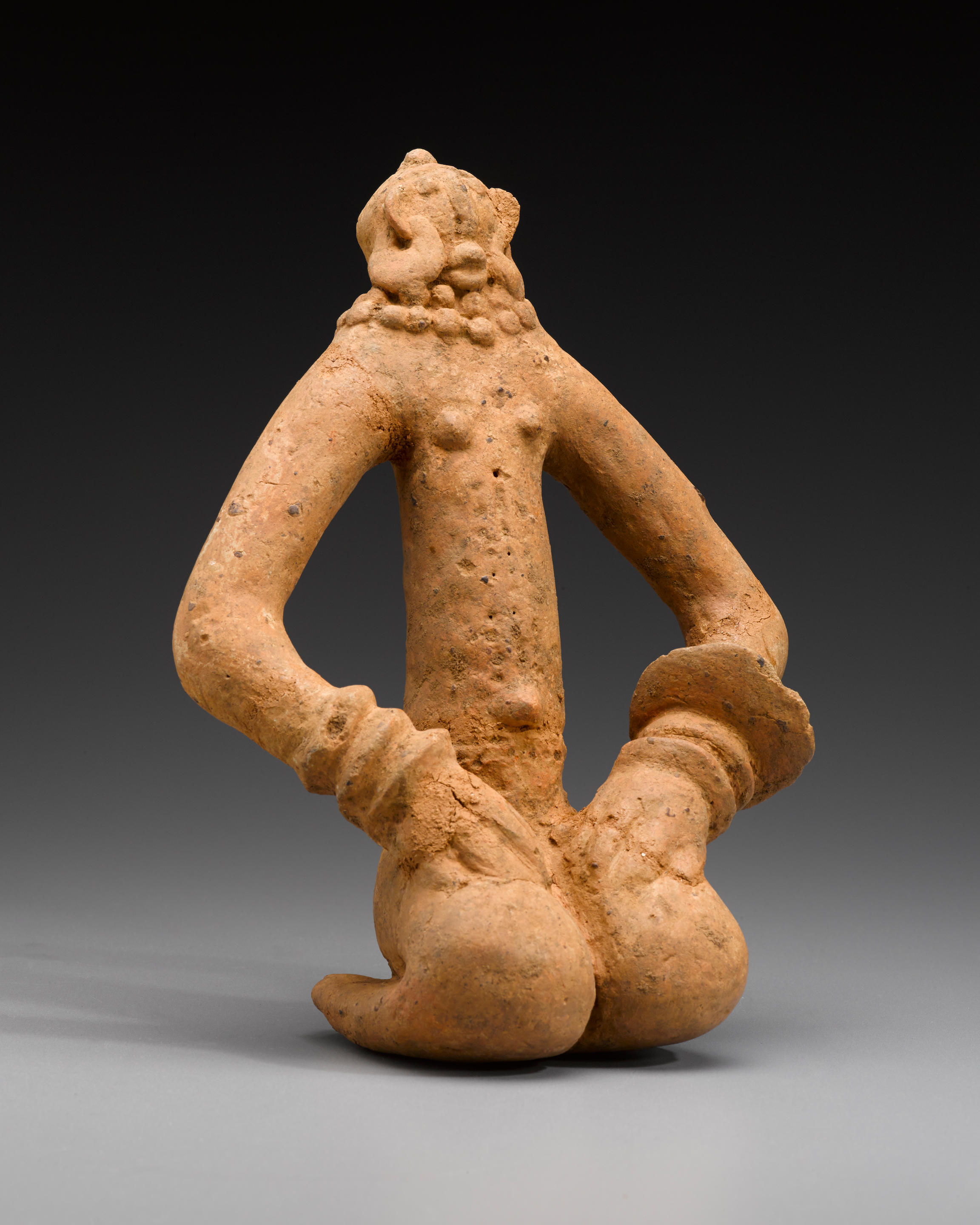
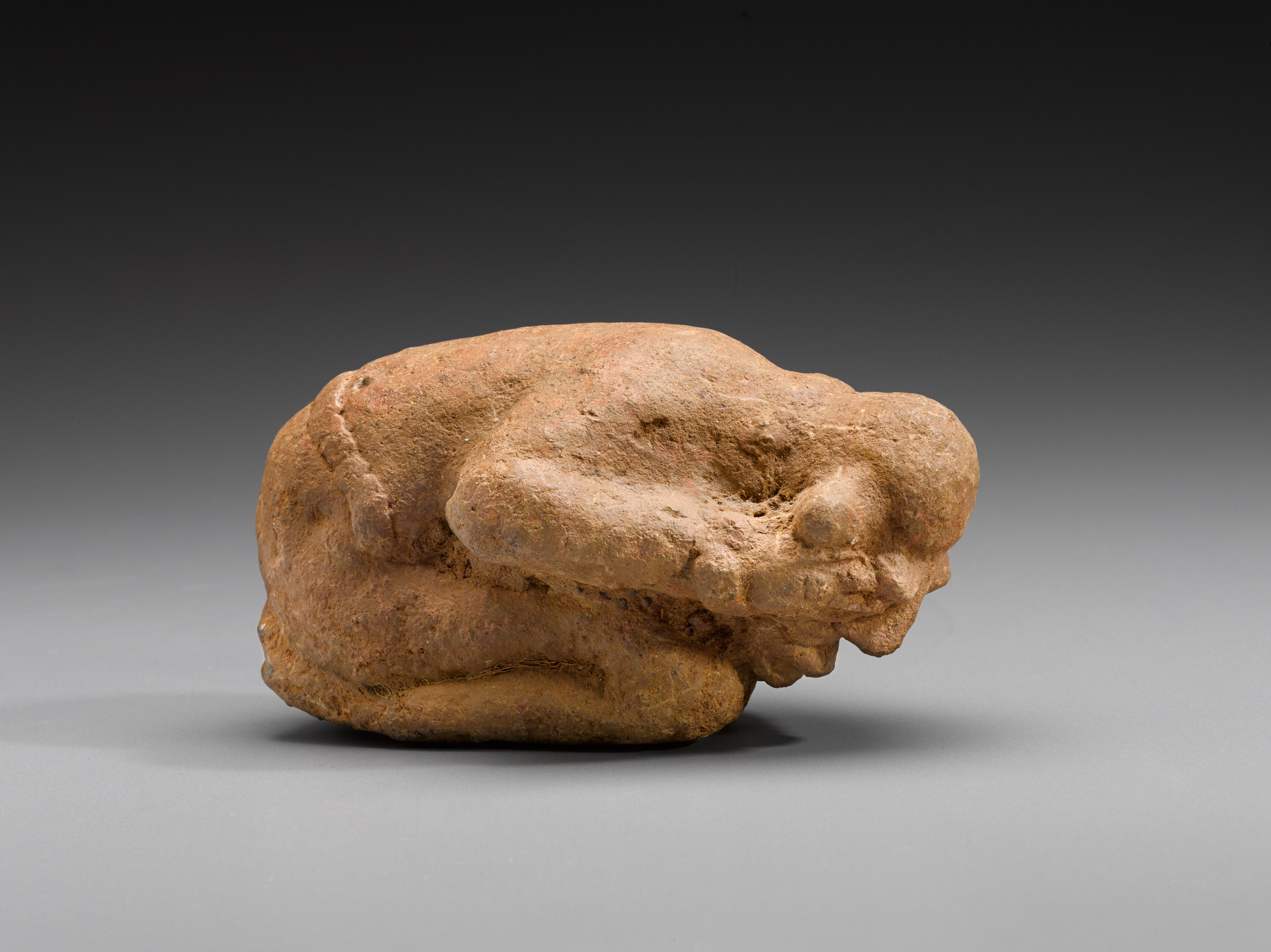
Try LotSearch and its premium features for 7 days - without any costs!
Be notified automatically about new items in upcoming auctions.
Create an alert